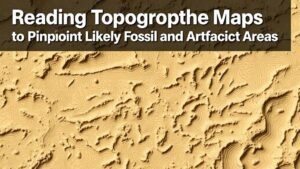Using AI to Analyze Historical Land Disputes for Clues to Hidden Artifacts
Using AI to Analyze Historical Land Disputes for Clues to Hidden Artifacts
The intersection of artificial intelligence (AI) and archaeological research has opened new avenues for uncovering hidden artifacts by analyzing historical land disputes. This article explores the methodologies and implications of employing AI to sift through historical documents and spatial data to identify significant archaeological sites potentially obscured by prior land claims. Focusing on specific case studies and existing AI technologies, this study aims to provide insight into how digital historical analysis can inform archaeological practice.
The Role of Historical Land Disputes in Archaeology
Historical land disputes often contain rich information regarding previous land uses, settlements, and cultural significance. e disputes can reveal locations of former habitation or ritual sites that may not be documented elsewhere. For example, in the case of the contested land in the Hudson River Valley of New York, disputes dating back to the 17th century showed patterns of land use that correlated with Native American heritage sites.
AI Technologies in Historical Analysis
Recent advancements in AI technologies have facilitated the analysis of vast datasets of historical documents and geographic information systems (GIS). The following AI methods are particularly useful:
- Natural Language Processing (NLP): NLP algorithms analyze text from historical records, extracting relevant information about land claims and ownership.
- Machine Learning: Machine learning models categorize and predict the likelihood of artifact locations based on historical land use data.
- Image Recognition: AI-driven image recognition technologies can identify and classify artifacts or features in satellite images, which may indicate archaeological significance.
Case Studies of AI Application in Archaeology
A notable case study in this field is the work conducted in the Mediterranean region, where scholars utilized AI tools to analyze land dispute archives from the Ottoman period (1299-1922). By employing machine learning algorithms, researchers could predict sites of interest where hidden artifacts related to the ancient trade routes might be located, leading to discoveries in areas deemed archaeologically insignificant.
Another example can be found in the application of AI at the ancient city of Pompeii. Utilizing machine learning to analyze historical maps and land records, researchers were able to pinpoint previously overlooked areas that were revealed as crucial for understanding the urban design and residential patterns before the volcanic eruption in 79 AD.
Challenges and Considerations
Despite the potential of AI in analyzing historical land disputes, challenges remain. One major concern is the accuracy of historical data, as records may contain biases or inaccuracies due to the authors perspectives and the socio-political context of the time.
- Data Quality: Ensuring that the datasets used for training AI models are both comprehensive and representative of the historical context is crucial.
- Interpretation of Results: Historical context is essential when interpreting AI findings, requiring a multidisciplinary approach involving historians and archaeologists.
Future Implications for Archaeological Research
The integration of AI into archaeological research marks a paradigm shift in how artifacts and historical data are approached. By providing a more robust framework for analyzing land disputes, AI can help uncover previously overlooked sites and artifacts, contributing to a more nuanced understanding of historical societies.
For example, continued research and development in this area can lead to greater collaboration between technologists and scholars, enhancing preservation techniques and site management strategies. Plus, the insights derived from these technologies could inform public policy related to land use and cultural heritage preservation.
Actionable Takeaways
As researchers and practitioners consider the incorporation of AI in their methodologies, they should focus on the following strategies:
- Invest in high-quality, openly available historical datasets to improve the accuracy of AI analyses.
- Foster interdisciplinary collaborations among historians, archaeologists, and computer scientists to ensure comprehensive interpretations of AI findings.
- Adopt a cautious approach to interpreting results, remaining aware of historical biases and the socio-political contexts of land disputes.
To wrap up, the application of AI in analyzing historical land disputes represents a promising frontier in archaeology. With careful implementation and continued collaboration across disciplines, this technology has the potential to unveil new chapters in our understanding of human history.


